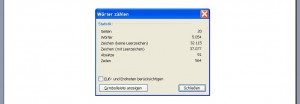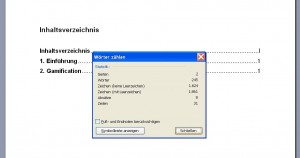As previously discussed, a leader is necessary for a raid. Without a leader, a raid won’t exist and even if the raid exists, it won’t be really successful. The leader is in charge of the group and is responsible to set out the goals and to make sure the group will achieve these goals. Unfortunately a leader needs influence: A leadership can only exist when the members are accepting the leader.
Members like to be directed by the leader and won’t feel the burden of being responsible for the whole group. Members also likes to get some feedback from their leader to get a better feeling for their work.
The leadership can be leader-centered using only one main leader or it can be used a shared leadership with several leaders. There’re many ways to lead a group and even if every leader is different and has an individual style of leading, there’re existing four general leadership styles:
Transactional leadership: This leadership style works by pointing out the requirements to achieve a certain goal and maybe setting out some rewards by accomplishment.
Transformational leadership: This leadership style works by focusing directly on the team members. The leader influences and motivates the members in a direct and charismatic way and cares about every member in his group.
Heroic leadership: This leadership style works mainly with a leader who feels superior to his subordinates. The decisions of the leader are based on his broad knowledge. Members of his group are fearing to fail because the leader will blame them.
The heroic leadership can be seperated into two sub-categories: autocratic and coercive leadership. The autocratic leader likes to have the full control over the group. He makes decisions without asking his team members and likes to give direct orders. The coercive leader demands from his team members total engagement and the will to do everything they can to achieve a certain goal.
Post-heroic leadership: The post-heroic leader wants to share a bit of the responsibility. He likes to inspire his members to learn, to gain more knowledge and to become better in what they are doing. The leader likes to discuss solutions with his team and supports innovations.
The post-heroic leadership can be seperated into two sub-categories as well: democratic leadership and shared leadership. Democratic leadership works by discussing possible solutions and giving his members a voice in decisions. Shared leadership allows the members to engage in the tasks of the leadership.
The best leaders are able to use these four different leadership styles and to switch between them according to the specific situation they are in. Sometimes shared leadership is appropriate: It gives the group the opportunity to gather different ideas and approaches, how to solve a certain problem. The members feel integrated into the whole issue solving process and they get a better impression of the situation they’re in. The main disadvantage of this style: it’s not very direct. If a decision needs be made in a short amount of time, this style isn’t the right way to go.
Fast decisions can only be made by few or only one member. If needed, a leader should be able to decide on its own and to push through his decisions. In this case, he should switch to the heroic leadership style. As a heroic leader, all the decisions are made by himself and he can directly advise his members to do a certain action.
Unfortunately the heroic leadership has its main disadvantage by being superior to the other members. They have to accept the decisions made by the leader and have to follow his instructions, even if they’re not agreeing with them. In stressful situations this style could solve issues. Whereas using only the heroic leadership style can cause some moral and motivation problems among the members.
The leader even can’t just rely on a transactional or transformational style. The leader should take care of all his followers but also be able to set out goals and to make clear what he’s expecting from his team.
Leadership styles – Roundup
All the four leadership styles have some advantages and even some disadvantages. A good leader should always have an overview over the whole situation he’s in to have the opportunity to change his leadership style to handle the situation properly. Just keeping one leadership style can cause severe problems. At least the leader should be able to push through his decisions without ignoring the opinions of his fellow members all the time.
In general, I also like to answer user – in this case your (!) – questions. So, if you’ve a question about the whole topic of raid-management, just write me an e-mail (questions[at]learning-by-gaming.net) and I’ll do my very best to answer them.
Reference:
Siewiorek, Anna; Gegenfurtner, Andreas (2010): Leading to Win: The Influence of Leadership Styles on Team Performance during a Computer Game Training, in: ICLS ’10 Proceedings of the 9th International Conference of the Learning Sciences – Volume 1, pp. 524 – 531.

